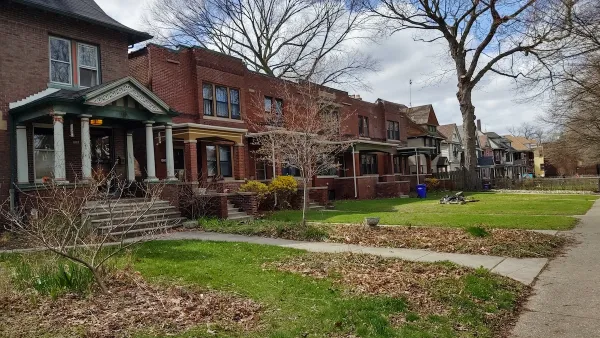Detroit is a city of borders: international borders, borders between cities and not-cities, and borders between the success of the past and the uncertain future, writes Jerry Herron in this essay for Places.
Herron explores Detroit's transition from a "city" to something else, something indicative of the global urban transformation in this first of a three-part series on the current state of the city.
"Detroit may be emptied out, but it is hardly over, nor will it be any time soon, precisely because of the questions that this city/not raises. What could have happened here? Does it have anything to do with the rest of America? Such questions are particularly pressing just now, as the world's population - at some point in 2008 - crossed a border never yet traversed by humans, with the majority of us becoming urban for the first time in history.
And that is just where Detroit's relevance lies. It is not only the busiest border crossing in the United States - literally - thanks to the volume of Canadian–American trade that passes through by water and rail and highway, but the busiest border in another, perhaps more crucial sense. Detroit sits precisely at the border of city and not-city; its condition renders the conflict between the natural world and the built environment in a specially forceful way, as Solnit points out. Here, the fearful energy released by a city in decay raises questions not only about the economic and governmental systems that produced Detroit (and America), but also about the humanity of citizens so transformed by urbanism that they can visit upon each other all the miseries and cruelty locally deployed. It's enough to make a person wonder, and especially to make Americans wonder, and maybe the rest of the world wonder too, as we all verge on a global urbanism and the city/not opposition achieves universal relevance. We wonder how so much that is valuable, in both material and human terms, could be so quickly and violently squandered. And we wonder at the cost - the waste and cruelty, and what the city has to do with it all, and what this place might portend. "
FULL STORY: Borderland/Borderama/Detroit: Part 1

Maui's Vacation Rental Debate Turns Ugly
Verbal attacks, misinformation campaigns and fistfights plague a high-stakes debate to convert thousands of vacation rentals into long-term housing.

Planetizen Federal Action Tracker
A weekly monitor of how Trump’s orders and actions are impacting planners and planning in America.

In Urban Planning, AI Prompting Could be the New Design Thinking
Creativity has long been key to great urban design. What if we see AI as our new creative partner?

King County Supportive Housing Program Offers Hope for Unhoused Residents
The county is taking a ‘Housing First’ approach that prioritizes getting people into housing, then offering wraparound supportive services.

Researchers Use AI to Get Clearer Picture of US Housing
Analysts are using artificial intelligence to supercharge their research by allowing them to comb through data faster. Though these AI tools can be error prone, they save time and housing researchers are optimistic about the future.

Making Shared Micromobility More Inclusive
Cities and shared mobility system operators can do more to include people with disabilities in planning and operations, per a new report.
Urban Design for Planners 1: Software Tools
This six-course series explores essential urban design concepts using open source software and equips planners with the tools they need to participate fully in the urban design process.
Planning for Universal Design
Learn the tools for implementing Universal Design in planning regulations.
planning NEXT
Appalachian Highlands Housing Partners
Mpact (founded as Rail~Volution)
City of Camden Redevelopment Agency
City of Astoria
City of Portland
City of Laramie





























